The UK Defence Journal takes pride in its commitment to transparency and adherence to the highest standards of safety and legality in all its operations, especially when it involves unmanned aerial systems (UAS).
In adherence to the UK’s civil aviation guidelines, the UK Defence Journal ensures that our drone flights abide by the Air Navigation Order (CAP 393) and CAP 722 guidelines.
While the Journal is committed to offering insights into the nation’s defence landscape, it strictly follows the National Security Act 2023, ensuring that journalistic pursuits never compromise national security.
Alongside this, an emphasis is placed on public and infrastructure safety through a set of comprehensive measures, including risk assessments, flight protocols, technical proficiency, and public awareness.
In light of the growing interest and concerns surrounding drone flights, let’s delve deeper into the meticulous process that ensures our drone operations meet the stringent criteria set by the relevant authorities.
Adherence to The Air Navigation Order (CAP 393)
The Air Navigation Order (CAP 393) is a comprehensive legislative document governing civil aviation in the UK. When our drone takes to the skies:
- Altitude & Distance Limits: Our operator ensures the drone never exceeds the prescribed altitude and always maintains a safe distance from people, vehicles, and properties.
- No-fly Zones: The operator respects all designated no-fly zones, including those around airports, government facilities, and other sensitive areas.
- Flight Path Planning: Before every flight, a flight plan is chalked out, anticipating potential challenges and ensuring we remain compliant with all ANO stipulations.
Following CAP 722 Guidelines
CAP 722 – Unmanned Aircraft System Operations in UK Airspace, offers explicit guidance for drone operations. Here’s how we align with CAP 722:
- Operator Proficiency: Our drone pilot undergoes rigorous training and possesses the required certification, ensuring they’re proficient and well-versed with CAP 722 guidelines.
- Operational Limits: Despite our drone being sub 250g, which brings certain flexibilities, we strictly adhere to operational limits ensuring we neither fly in adverse weather nor outside stipulated timings.
- Permissions: In scenarios where permissions are required, be it from landowners or other authorities, the UKDJ always ensures necessary approvals are in place before the drone takes off.
Filming Military Shipyards: A Delicate Balance of Journalism and National Security
The UK Defence Journal remains devoted to transparently providing our readers with comprehensive insight into the nation’s defence landscape. Recognizing the significance of the National Security Act 2023, we’ve instituted stringent measures that ensure our drone operations around shipyards strictly adhere to the Act’s provisions:
- Prohibition on Disclosing Protected Information: We never obtain, copy, record, retain, or disclose any protected information as defined by Section 1(2). Our drone footage focuses solely on areas visible to the public, ensuring we don’t inadvertently access information that might be restricted for the UK’s safety or interests (Section 1(1) & (2)).
- No Assistance to Foreign Intelligence Services: Our operations are purely journalistic in nature. We don’t engage in any activity that may assist foreign intelligence services, either directly or indirectly, as outlined in Section 3(1) & (2). Our journalistic ethos is founded on integrity and a commitment to the safety and interests of the UK.
- Steering Clear of Prohibited Places: We adhere strictly to the definitions provided in Section 7, ensuring that our drones never access, enter, inspect, pass over or under, or approach prohibited places as identified in Sections 4(1) & 5(1). Our drones maintain a distance and utilise zoom capabilities, ensuring that we don’t infringe upon areas designated for UK defence purposes, as described in Section 7(1) and (2).
- Transparency with BAE: BAE Systems is fully aware of our team and our operations. We never act in a manner that could be perceived as prejudicial to the UK’s interests (Sections 1(1)(b) & 4(1)(b)).
- Review Before Publication: Every piece of footage is meticulously reviewed before publication to guarantee that no aspect of it could be misconstrued as assisting a foreign intelligence service or providing access to protected or prohibited information (Sections 1, 3 & 4).
- Education and Training: Our team receives ongoing training to stay abreast of all defence-related legal regulations. This includes a deep understanding of the National Security Act 2023, ensuring our operations align with its requirements.
Safety Protocols to Preclude Reckless Endangerment
Whilst the primary focus of our operations centres around national security adherence, the safety of the public and infrastructure remains paramount. The UK Defence Journal is profoundly aware of the concerns associated with drone operations and has instituted comprehensive measures to address them:
- Risk Assessments: Before any flight, our team carries out an exhaustive risk assessment. This evaluates environmental conditions, identifies potential obstacles, and delineates emergency protocols.
- Flight Paths & Altitudes: Our expert drone pilots operate drones in a manner that adheres strictly to predetermined flight paths and maintains altitudes that are clear of obstructions or heavily populated areas, conforming to guidelines set by the Civil Aviation Authority.
- Technical Proficiency: Every drone operator within our team is not only certified but also undergoes consistent and rigorous training sessions. They’re well-versed in the intricacies of drone flight and are equipped to handle unexpected situations.
- Equipment Check: Every drone in our fleet undergoes routine maintenance and is subject to meticulous pre-flight checks, ensuring optimal condition and substantially reducing the potential for technical hitches.
- Geo-fencing Technology: To further bolster our safety measures, our drones employ geo-fencing technology, ensuring they function within designated zones, avoiding any inadvertent entry into restricted or congested areas.
- Public Awareness: In instances where our drone operations are near public areas, we make it a point to inform local communities about the nature and timing of these flights. This approach not only promotes transparency but also empowers individuals to make informed decisions.
- Emergency Protocols: Should there be an unexpected glitch, our drones come equipped with a range of fail-safes, including return-to-home features and secure landing measures, which can be promptly initiated to mitigate risks.
- Insurance: It’s worth noting that every drone flight we undertake is underpinned by a robust insurance policy, which reflects our unwavering commitment to addressing any unforeseen incidents with the highest degree of responsibility.
- Privacy & Discretion: Respecting personal spaces is a cornerstone of our operations. We’re committed to ensuring our drones never inadvertently encroach upon private areas or inadvertently film individuals.
In light of these rigorous safety protocols, our drone flights are orchestrated with the utmost diligence and foresight, ensuring they stand far removed from any notion of reckless endangerment to either the public or property.




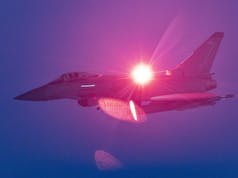
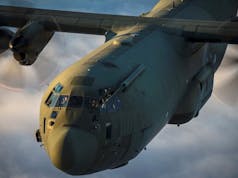
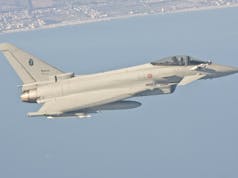
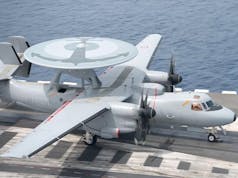
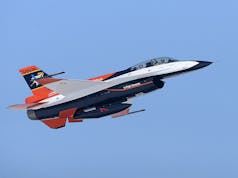










I used to run a commercial drone service company doing exactly as George, quite rightly, indicates. Often we had to clean up the mess (bad relations etc.) left by rogue/ignorant drone operators.
Sadly, clients (surveyors, architects etc.) would not pay the real-world costs of operating in this way and we had to withdraw from drone work as we would not compromise on safety or legality. I suspect there are probably still many operators out there, un-insured and un-safe in their approach.
No chip. Just telling it like it is in the commercial world. I’m more of a salt ‘n’ vinegar kind of person. 🙂
Sadly, legitimate operators often loose business to the ‘cowboys’ as the clients who hire them are not held accountable. The risk of non-compliance lies with the drone operator who can profit from risk taking !
I live within spitting distance of the Devonport Dockyard fence and in the centre of a CAA no-fly zone. Even flying my drone in the park near where I live is illegal.